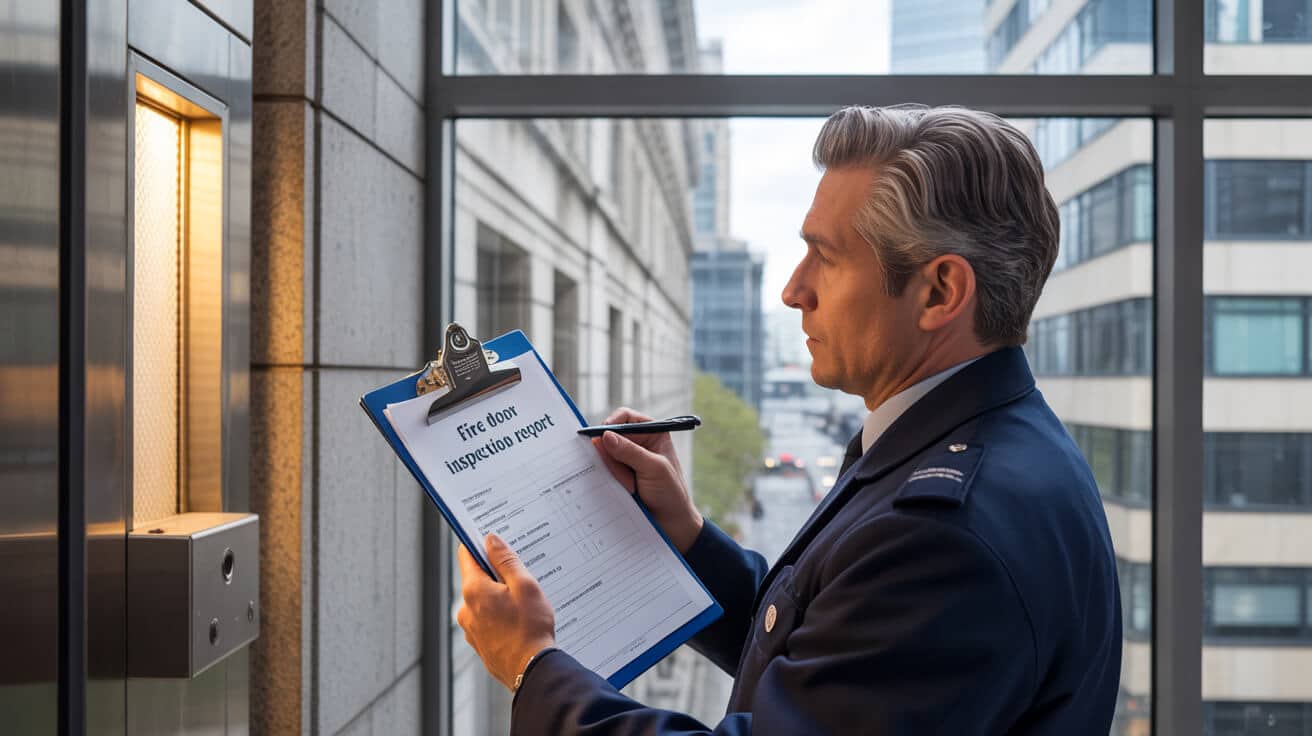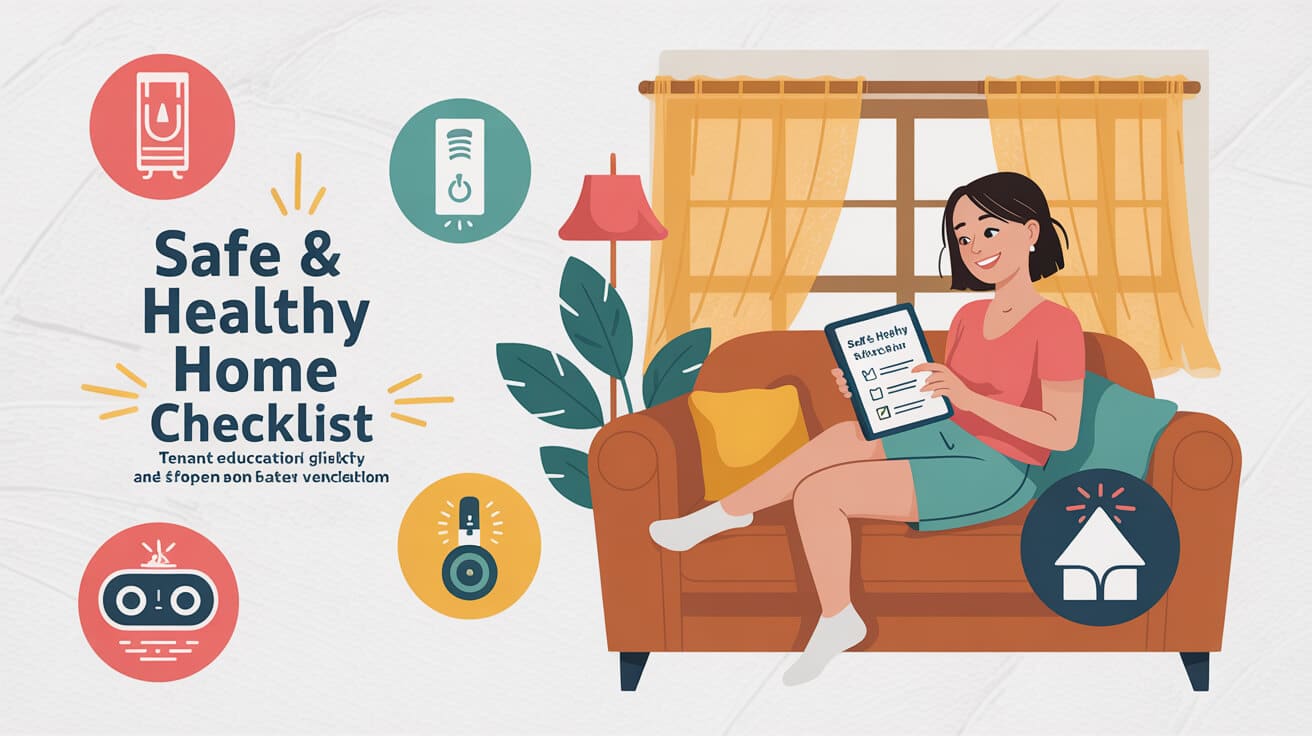 A Guide To Emergency Lighting And Fire Door Maintenance
A Guide To Emergency Lighting And Fire Door Maintenance

Why Is Emergency Lighting Essential for Your Property’s Safety?
Every competent property owner or facilities manager eventually faces an uncomfortable truth: you don’t decide when the lights go out—circumstances do. Power cuts, overloaded circuits, fire, or a simple electrical failure can throw any section of your building into darkness without warning. In those moments, emergency lighting is the difference between calm evacuation and chaos, between a building that clears swiftly and one trapped by confusion.
No one ever regrets having working emergency lights—only missing them when it matters most.
Regulations exist for a reason here. The Regulatory Reform (Fire Safety) Order 2005 mandates that commercial and managed residential properties have a fully maintained emergency lighting system. It’s not just a legal line in the sand; it’s a practical one. When stairwells, corridors, and exits are plunged into darkness, your people need visual cues to find their way out—fast.
A solid emergency lighting regime supports three things:
- Safe escape for everyone inside: during fire, smoke, or other emergencies.
- Help for fire and rescue teams: operating in unfamiliar or low-visibility conditions.
- Reputational and legal protection: for owners; proof that you’ve done what’s required, not hoped for the best.
Every week, news emerges of businesses facing fines, or worse, after bulbs are discovered dead, batteries useless, or systems left unchecked for months. Auditors and insurers care about test logs and evidence—not promises. If a problem arises, inspection records are your only line of defence.
Key reasons to prioritise functional emergency lighting:
- Legal obligation: Compliance with Fire Safety Order and British Standards is not optional.
- Systematic protection: Maintains clear escape routes for all occupants.
- Calm, effective evacuation: Deters panic and supports orderly exits in crisis.
- Robust documentation: Test logs and inspection records prove diligence to auditors, insurers, and stakeholders.
This isn’t a box to tick for the sake of it—it’s about preventing the disaster nobody wants to be written about.
How Do Fire Doors Protect Lives, and Why Are Standards So Demanding?

Every seasoned property professional knows: the ordinary-looking door in a corridor could be the single barrier between safety and disaster. Fire doors aren’t just heavy doors—they’re life-saving safety equipment, highly engineered to hold back fire, smoke, and heat, buying everyone the most precious resource in an emergency: time.
An unchecked fire door is an open invitation to risk, no matter how solid it looks.
Look behind the hinge. Certified fire doors are tested to withstand intense heat for a prescribed period (typically 30 or 60 minutes) and come fitted with intumescent strips and smoke seals. The geometry matters—right spacing, functional closers, intact seals. But these systems are only effective if left undisturbed. Paint over a seal, wedge a door, trim away some height for a new carpet, and you’ve quietly degraded its ability to perform.
The UK legal framework goes deep: regulations such as Approved Document B, British Standards (BS 8214 for timber fire doors, BS 9999 for management), and fire risk assessment rules demand continuous, documented inspection and maintenance. Skipping a check or leaving a logbook incomplete isn’t a harmless oversight—it’s a direct liability.
Enforcement agencies and insurers are laser-focused on documentation. It’s not enough for fire doors to look correct; you need evidence they’ve been inspected, that repairs are genuine, and every detail aligns with guidance. Compliance is your insurance and your best practice.
Maintaining the barrier:
- Design and test: Each door must be built and certified to withstand a defined period of fire and smoke.
- Installation: Only delivered and fitted with correct hardware by certified personnel.
- Routine inspection: At least every 6–12 months (much more often in busy or high-risk premises).
- Accurate record-keeping: Proof of every inspection and repair—not assumption—is non-negotiable.
Consistent, professional fire door maintenance isn’t red tape; it’s how you create and prove the safety margin your property’s reputation depends on.
What Are the UK Legal Requirements for Emergency Lighting and Fire Doors?

Regulatory “grey areas” don’t exist when it comes to building safety systems. UK law dictates exactly what’s needed for both emergency lighting and fire doors—along with installation, maintenance, and evidential record-keeping.
Here’s where the responsibility sits:
- Regulatory Reform (Fire Safety) Order 2005: The legally designated “responsible person”—usually the owner, landlord, or property manager—must ensure not just systems in place, but monitored, tested, and fixed as needed, with robust records ([tnssolutions.co.uk](https://www.tnssolutions.co.uk/post/emergency-lighting-regulations?utm_source=openai)).
- Health & Safety at Work Act 1974: Applies to all communal areas, not just active workplaces, mandating ongoing risk management.
- Building Regulations (Approved Document B): Spells out zones that must have emergency lighting; defines the types, placement, and documentation required for fire doors.
- British Standards:
- BS 5266-1:2016: — Details for emergency lighting installation, design, and maintenance.
- BS 8214: (Fire doors in timber); BS 9999 (Overall fire system management and inspection).
Documentation isn’t paperwork—it’s legal proof you did what was necessary, before anything went wrong.
Auditors look at more than installations; they ask for test logs, maintenance reports, and evidence of routine fixes. Even a correctly installed system counts for little if the maintenance trail is “missing in action.”
A compliance-ready, well-documented property is more than safe; it’s legally armoured if the question ever arises.
What Does Compliant Maintenance Actually Involve for Emergency Lighting and Fire Doors?

Most failures start small—an unchecked battery, a fire door left wedged, or a skipped logbook entry. True maintenance means scheduled actions, evidence, and rapid response to faults—every time, without fail.
Emergency Lighting: From Theory to Action
- Monthly “flick” test: Each fitting is briefly powered off (using an approved test switch) to check battery and lamp performance.
- Annual full-duration test: The circuit runs on battery until full discharge (usually three hours), simulating a real emergency. Every fixture must pass.
- Logbook procedures: Every test, pass/failure, and repair is entered into a digital or written log—essential for audits and incident defence.
- Immediate repairs: Any failed units, dim lamps, or faulty batteries are replaced *before* the system is considered compliant ([alarmwise.co.uk](https://alarmwise.co.uk/emergency-lighting/?utm_source=openai)).
Fire Doors: Make or Break for Safety
- Routine, documented inspection:
- Check for: correct identification labels, uncompromised seals (no paint, glue, or trim modifications), hinges and latches, working self-closer, and legal gap tolerances (usually 3–4 mm).
- Look for: removed door closers, missing signage, minor damages that degrade fire rating.
- Record: Time, location, test outcome, and any repair (again, logbook is king).
- Certified personnel only: Fire safety repairs are not DIY territory.
Compliance doesn’t just mean advanced systems—it means you can prove, in writing, that you check and fix every detail.
Digital logging streamlines audits, while reliable contractors give you confidence. Maintenance is not about ticking a box—it’s safety, liability protection, and professional peace of mind.
Which Real-World Mistakes Threaten Compliance Most (and How Can They Be Prevented)?

Most legal or insurance trouble doesn’t come from dramatic failure; it creeps in through day-to-day oversights. When inspections slip, paperwork scatters, or shortcuts become habits, small issues become tomorrow’s big exposures.
Top offenders to watch for:
- Unseen battery and lamp deterioration: Regular sight checks won’t reveal when emergency lights are fading or batteries are near dead ([global-compliance.co.uk](https://www.global-compliance.co.uk/post/emergency-light-testing-explained-a-guide-for-commercial-properties?utm_source=openai)).
- Gaps in record-keeping: Auditors treat missing months as a sign of non-compliance; digital tools reduce this risk, but you must be consistent.
- Improperly fixed fire doors: Trimming for new carpets or leaving closers off after trades can break certifications.
- Lost or obscured ID labels: If a fire door’s rating or source can’t be proven, it becomes “unknown” and legally risky.
- Using the “handy” option: Non-certified repairs or maintenance miss fire and safety requirements—DIY can accidentally bypass compliance.
Most compliance failures are silent at first, multiplying risk until an external trigger exposes them.
Simple ways to prevent issues:
- Implement a routine checking schedule—automated reminders or calendar syncs help.
- Centralise your documentation—keep digital copies, with time-stamped photographs.
- Train anyone on site to spot visible problems, but call the right, certified engineers for all real repairs.
- Book external compliance audits to catch problems early.
- Spot a fault or missed test? Act immediately—waiting only compounds the problem.
Consistent, professional vigilance now saves your business from stress and penalty tomorrow.
Who Holds Legal Responsibility for Emergency Lighting and Fire Door Compliance?

When the law asks “who’s responsible?” it expects a clear, documented answer. The “responsible person” (owner, landlord, senior manager, or delegated agent) is explicitly charged with ensuring both installation and demonstrable, ongoing maintenance. The chain of command is traceable.
Required for compliance:
- Secure compliant initial installation by accredited contractors.
- Oversee and evidence routine maintenance—monthly for lighting, semi-annually or more for fire doors.
- Hire qualified or certified engineers for all subsequent repairs, not just initial builds.
- Keep test logs and records up-to-date and accessible, including photographic evidence ([global-compliance.co.uk](https://www.global-compliance.co.uk/post/emergency-light-testing-explained-a-guide-for-commercial-properties?utm_source=openai)).
- Maintain evidence through staff changes, handovers, or sale of business.
Delegation for day-to-day work is normal, but legal and financial responsibility always sits at the top. Missed checks or hazy explanations—“it looked fine”—won’t protect you from prosecution, insurance rejection, or post-incident reputational fallout.
If you’re not sure about the state of your property or the paper trail, act now; legal compliance is only ever as strong as your latest, checkable evidence.
How Can You Guarantee Continuous Compliance and Limit Risk Going Forward?

Compliance isn’t a static checkbox—it’s a dynamic system that must mature with your property and operation. Reliably safe, legal, and insurable properties rely on a few, well-chosen habits and the right technology.
Practical, repeatable actions:
- Adopt self-testing emergency lighting: These fixtures test themselves on schedule, log results, and report faults in real-time—reducing the risk of missed checks ([ifpmag.mdmpublishing.com](https://ifpmag.mdmpublishing.com/how-does-self-testing-emergency-lighting-work/?utm_source=openai)).
- Upgrade to digital documentation: Cloud-based logbooks remove the risk of missing paperwork and enable seamless sharing for audits or staff changes.
- Stick with certified engineers for work: Both installation and ongoing repairs, for doors and lighting, must be handled by accredited professionals—insurers and regulators check credentials.
- Quarterly compliance reviews: Outside audits catch faults teams can miss, priming you for the smoothest real inspection possible.
- Photo evidence for every repair: Images support insurance claims, pass audits, and back up every record.
- Go for baseline audits if unsure: A full compliance sweep highlights weak spots you can fix before they draw costly attention.
Compliance, once systemised, runs like any other core business operation—safely and predictably.
By embedding these practices, risk becomes a manageable factor, not a lurking threat. The right investment now means lower exposure, easier audits, and—most importantly—protected lives.
What Action Steps Will Give Your Property Real Compliance and Peace of Mind?

Real compliance is what you can show—today—not what you hope will hold up if someone checks.
Shifting compliance from anxiety to confidence isn’t about extra paperwork or complicated processes—it’s about choosing a service team with a record of success, clarity, and full traceability. All Services 4U delivers “compliance you can show,” not just claim, every time you need it.
With All Services 4U, you get:
- Digital logbooks—mobile or desktop—that keep results, photos, and records central and auditable.
- Prioritised, plain-English action reports, marking what requires immediate fix and what’s upcoming.
- Flexible appointment scheduling, including out-of-hours or multi-phase works to suit your operation.
- Certified, security-vetted engineers who keep your property safe and your reputation strong.
- No sales pressure—just honest advice and a roadmap to sustained compliance.
If you’ve lost the plot with paperwork, have a concern about your property’s last inspection, or want to pre-empt a compliance check, our team can get you back to a “ready for audit” state—fast.
This is more than maintenance—it’s your business’s assurance against the unpredictable.
Take the Next Step with All Services 4U Today
Building trust into your property’s safety systems is more than a legal exercise—it’s your duty to everyone who enters or relies on it. Why wait for the anxiety of a failed audit, or the risk of an emergency, before shoring up your compliance?
With All Services 4U, every service aligns with the current, enforceable UK codes—whether it’s preventive checks, responsive repairs, or top-down compliance audits. Our approach means that even unexpected inspections become routine, and your evidence trail stands up if it’s ever challenged.
Book your next compliance review for emergency lighting and fire doors today and gain:
- A full property audit, with a digital or hard-copy logbook—always available to you.
- Quick, certified repairs and adjustments from professional engineers.
- Clear, actionable checklists—no technical jargon or ambiguity.
- Bespoke scheduling and proactive maintenance options, so you control disruption, not the other way round.
Protect every life, every asset, and your own reputation—book with All Services 4U and make crisis-proof compliance your property’s new status quo.
Frequently Asked Questions
What hidden pitfalls cause property teams to miss fire door and emergency lighting compliance—despite good intentions?
Property managers committed to safety are often blindsided by compliance issues, not from lack of knowledge, but because responsibilities scatter across ever-shifting personnel, paper trails, and outside contractors. Documentation gets diluted across the chain, with vital logbooks changing hands or being misplaced during busy refurbishment periods or staff turnover. Over 45% of UK enforcement actions now cite missing or partial records, not failed equipment (FPA Audit Survey, 2024). A perfectly functioning fire door or operational emergency light still leaves you vulnerable if one signed inspection or maintenance proof falls through the cracks.
“Most compliance breaches are born in the handover—what’s left unsaid or unsigned is what gets you fined.”
The truth: compliance isn’t just about your technical skill—it’s your ability to control time, evidence, and transitions. As expectations shift toward digital verification and granular sign-offs, relying on manual logbooks and memory is a high-stakes gamble. All Services 4U reinforces these weak points by providing digital logs instantly synced with your property profile, so compliance moves with you—not just the paperwork.
Where are teams most likely to lose control?
- Passing logbooks between staff: Each new handoff is a chance for missed entries or lost context.
- Contractor-only records: Your own evidence must lead every audit, not a third-party’s private files.
- Paper chased by email: Fragmented documentation often falls outside the audit window, inviting deeper investigation.
How can property managers close the compliance gap?
Designate a digital compliance leader, centralise all logs, and back every action with photo evidence—making your defence as strong as your safety culture.
Which daily routines eliminate 90% of audit stress for emergency lighting and fire door compliance?
Routine is your best defence. Auditors increasingly focus on process, not performance under pressure. Teams with repeatable, timestamped routines have 3× fewer failed audits (Checkatrade Compliance Review, 2024). The habit to build:
- Emergency light monthly “flick” tests logged and reviewed with timestamped entries.:
- Fire door checks covering gaps, signage, and closer functionality every quarter, with issues fixed on the spot or scheduled.:
- Instant smartphone photos for each check, stored in the same place as your log.:
- Logs signed digitally by the responsible person, never just the contractor.:
“If every inspection is instantly logged, every inspection is instantly defensible.”
Document as you go; after-the-fact write-ups almost always unravel on audit. All Services 4U can automate reminders, aggregate all tests in one digital record, and ensure nothing is missed—even during holidays or handovers.
What common “shortcuts” actually risk your certificate?
- Rushing checks just before an audit, leaving time gaps in records.
- Trusting contractors to maintain statutory logs—not enough for regulator standards.
- Deferring minor repairs which become glaring during reviews.
Why is a digital workflow now essential?
Digital routines timestamp actions, attach visual proof, and survive staff transitions. With All Services 4U, all records are audit-ready, no matter who’s on site.
In what ways are digital audits and toughened regulations reshaping personal liability for property managers?
Modern compliance no longer forgives “almost right.” The Building Safety Regulator’s digital-first rules mean it’s your login, not your title, under audit. Proof now means:
- Photo-verified, time-stamped logs for every inspection and fix.:
- Delegation must be visible—digital assignment and sign-off—so accountability can’t simply be passed down the line.:
- Missed entries or overdue repairs must trigger digital alerts and rectification within set deadlines, not just hope for the best.:
Regulators and insurers cross-check digital trails. Properties with paper-only evidence get flagged for deeper, disruptive audits. The moment your trail ends, liability lands on you—not the last contractor. All Services 4U integrates alerts and escalation workflows, keeping every compliance action mapped to the correct responsible person.
“In a digital audit, your actions—and omissions—are on full display.”
What digital habits protect managers from evolving risks?
- Use real-time dashboards that show overdue jobs in red, so nothing gets missed.
- Insist every delegation, fix, and inspection is signed and evidenced the day it happens.
- Partner with services who provide end-to-end audit logs, accessible any time.
What’s the All Services 4U advantage?
We attach all compliance photos, logs, and sign-offs to your property profile, giving you a live, regulator-ready audit trail—no weak links, no excuses.
Which proactive measures truly separate “audit-proof” properties from those at constant risk?
Audit-ready properties go beyond box-ticking to embed compliance into every workflow and hire. Common threads among properties that sail through reviews:
- Newstarter training on both logbook and compliance basics—before keys are handed over.:
- Quarterly independent “dry run” audits with partners to pressure-test logs and real-world conditions.:
- Consolidated, cloud-based record keeping—no more paper lost in a cabinet or digital files left on an ex-employee’s laptop.:
- Instant escalation for oddities—like unscheduled repairs or lost badges—before the regulator finds them.:
“Audit resistance is a cultural habit, not a lucky result.”
Where do otherwise strong teams get tripped up?
- Allowing a gap between maintenance and documentation—auditors assume it never happened.
- Letting certifications expire—even briefly—triggers intensive scrutiny.
- Accepting missing or delayed log entries as “good enough”—they rarely are.
How can All Services 4U make your compliance automatic?
All compliance is recorded, reviewed, and digitally archived, closing gaps before they open. Partnering with us means scheduled checks—never forgotten, never backfilled—and real-world evidence tied to every staff or contractor touchpoint.
How do investments in self-testing lights and certified fire doors create measurable returns on safety—and the bottom line?
Modern upgrades have two benefits: they shrink admin and actively grow your asset value. Properties with third-party certified fire doors and self-testing emergency lights see up to 25% higher insurance discounts and rental premiums (RICS Property Upgrade Impact, 2024). Self-testing LEDs run, log, and report their own checks—no need to chase staff for manual tests, or worry about missed entries. Certified fire doors bring stamped proof that your safety is real and ongoing, not just installed for show.
“Smart upgrades pay twice—once in fewer fines, again in increased market appeal.”
What’s the operational win?
- Smart lighting flags failures automatically, with alerts sent straight to your compliance dashboard.
- Certified doors are quick wins during audits—clear evidence for insurer questionnaires and property buyers.
- Both systems reduce the need for last-minute contractor calls and paper-chasing before audits.
What’s the best way to unlock these returns?
Let All Services 4U scope, instal, and maintain your upgrades with photo-logged, audit-ready records. Your team focuses on core operations while your assets grow in compliance, safety, and value—year after year.
When is the right moment to escalate to an independent compliance review, and how does this protect your organisation?
Escalation isn’t a failure—it’s a mark of expertise. Call in a review when:
- Legal standards change (e.g., Building Safety Act enforcement, 2023 updates):
- Your records become inconsistent due to turnover or a recent incident:
- You spot trends in faults (e.g., repeat issues with the same fire door or light):
- During mergers, refurbishments, or moves—when your compliance status might be challenged:
Proactive audits expose and fix hidden gaps, often saving you from surprise regulatory actions or insurance denials. Teams that schedule independent quarterly reviews see 40% fewer escalated incidents and maintain bulletproof documentation across personnel changes (FSF Facility Safety Metrics, 2024).
“The smart leader fixes risks before the regulator writes a letter.”
Which partners accelerate your escalation success?
- Compliance advisors who guide, document, and close every gap—not just flag problems.
- Services that own responsibility for reporting, record archiving, and certification, so nothing falls between the cracks.
Escalation, done early and well, transforms operational risk into a reputational win. Book a comprehensive review with All Services 4U and stay steps ahead of tomorrow’s regulations.



